In summer, new and often puzzling birds appear in the garden. It’s tempting to assume that you’ve found something exotic, but what you’re really looking at are the first fledglings of the year.
Once their parents stop feeding them, working out the identity of the new kids on the block can be hard (few field guides illustrate recently fledged individuals), but this identification parade should help.
Start by asking yourself which adult birds the youngsters most resemble in size, profile, bill-shape and behaviour. Plumage colour and pattern are much less important. Many young birds retain their juvenile plumage for several months until their first moult – and it’s this that can be confusing.
The robin looks unfamiliar as a youngster because it starts out with no trace of the red breast sported by its parents: only in autumn do the first scarlet feathers begin to appear.
When I first started watching birds as a boy, I was also foxed by young mistle thrushes, whose scaly appearance made them look quite different to the more uniform adults.
Young greenfinches can be confusing, too, until you spot a flash of yellow in the wing. And many budding birders have been left red in the face by failing to appreciate that young goldfinches aren’t (red-faced, that is).
What to do if you find a baby bird
If you find a baby bird, leave it alone: its parents are probably nearby. For more advice go to rspb.org.uk
How to identify baby birds
Blackbird (Turdus merula)
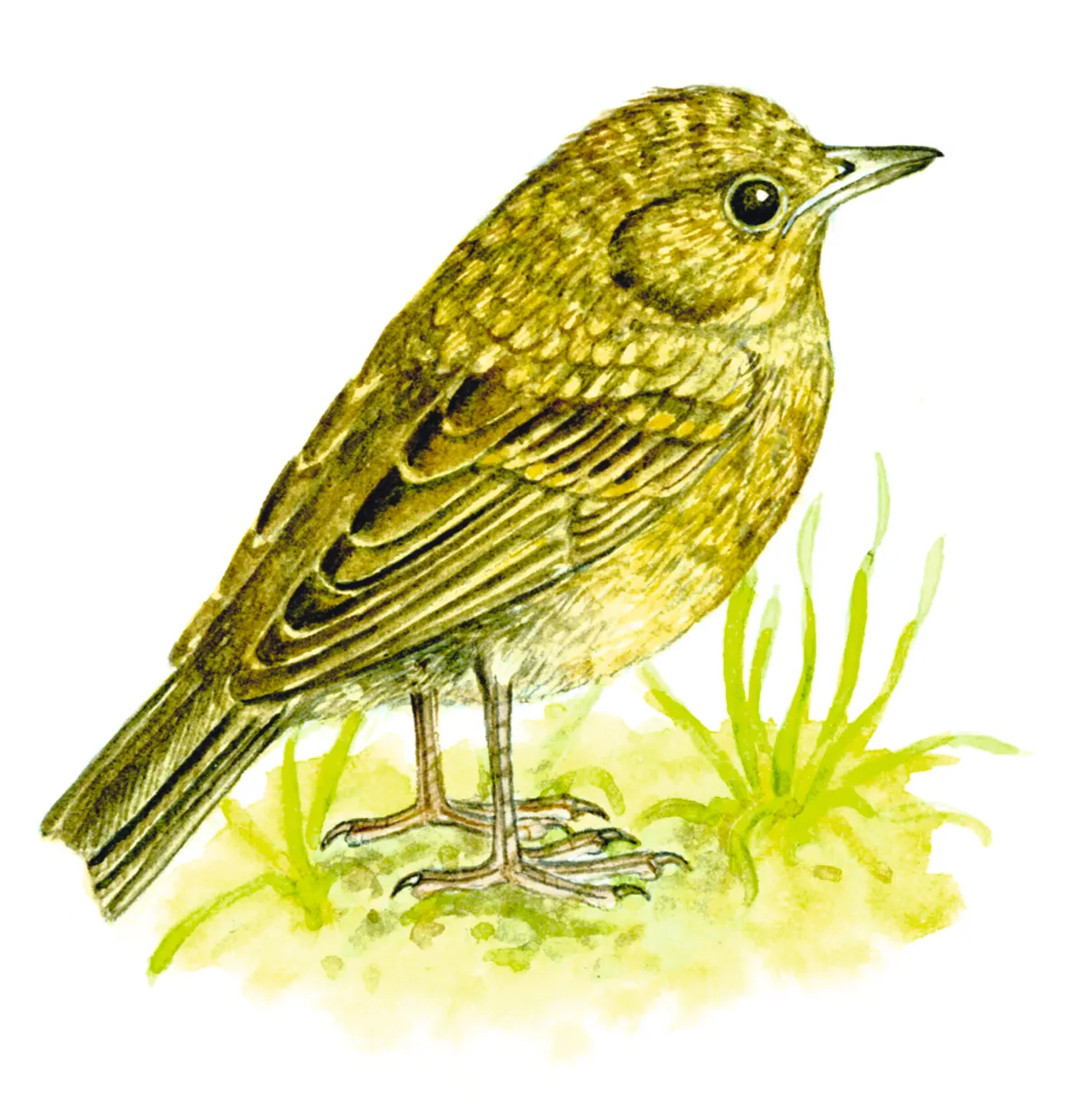
Variable, but usually brown with rusty streaks and spots. Breast and flanks often speckled or ‘scaly’.
Mistle thrush (Turdus viscivorus)
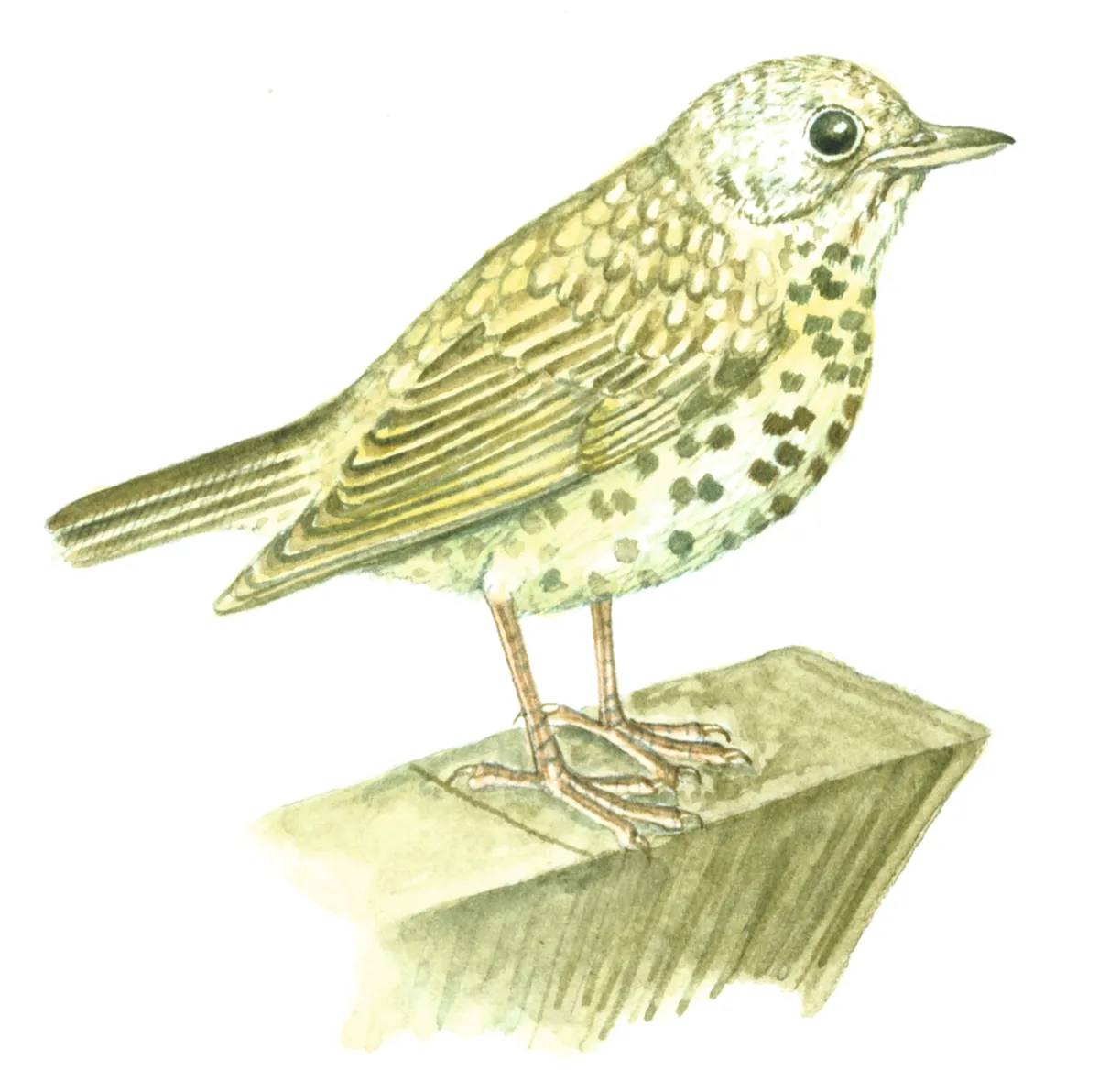
Pale centres to upper back and wing feathers create a ‘scaly’ look unlike the more uniform adult.
Robin (Erithacus rubecula)
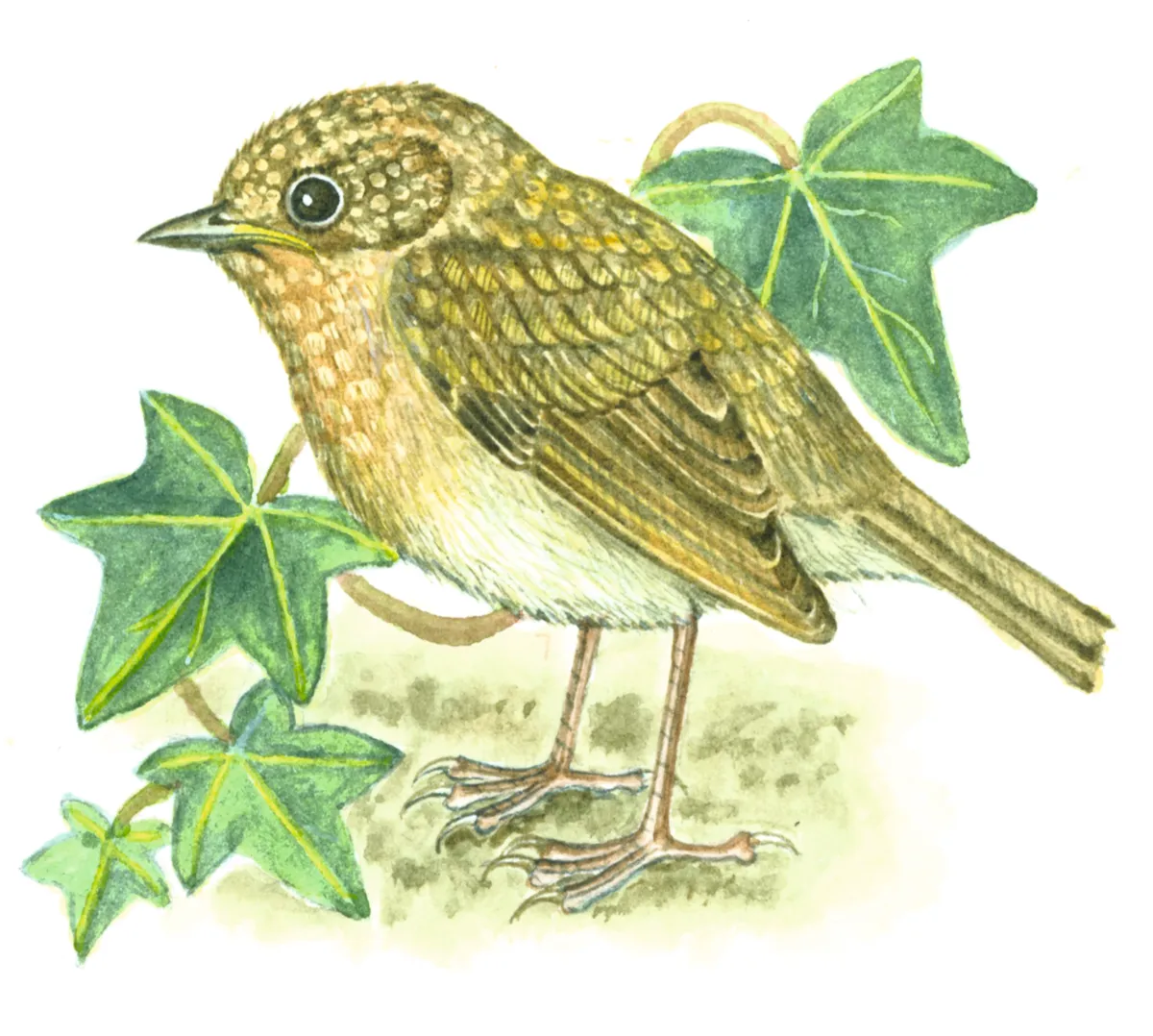
Speckled breast and head; pale-centred feathers on upper back. Lacks adult’s red breast and face.
Great tit (Parus major)
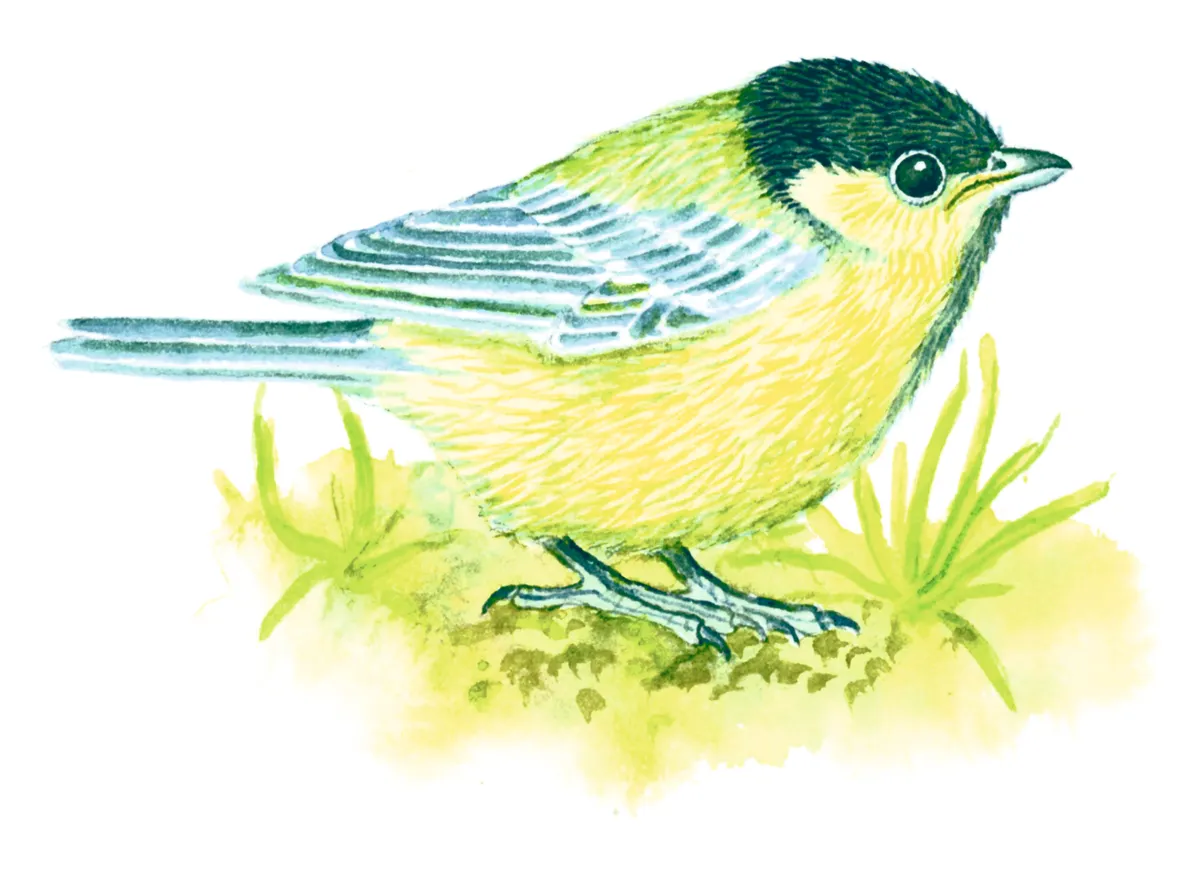
Looks ‘washed out’, with only a faint belly stripe (bold in adult) and overall yellow tinge to plumage.
Blue tit (Cyanistes caeruleus)
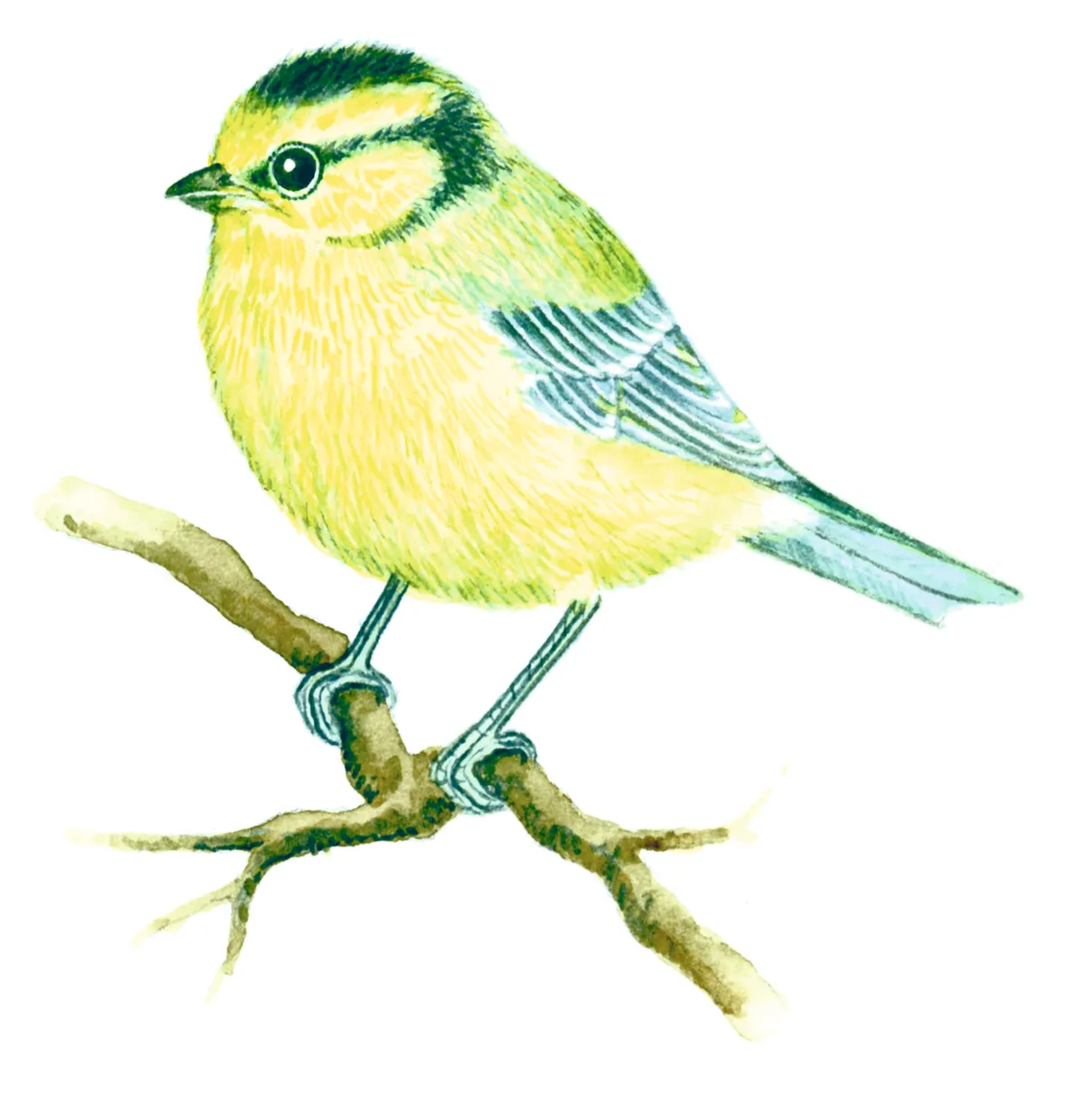
Looks ‘jaundiced’, with yellowish cheeks, forehead and eye-stripe. Lacks adult’s black throat patch.
Goldfinch (Carduelis carduelis)
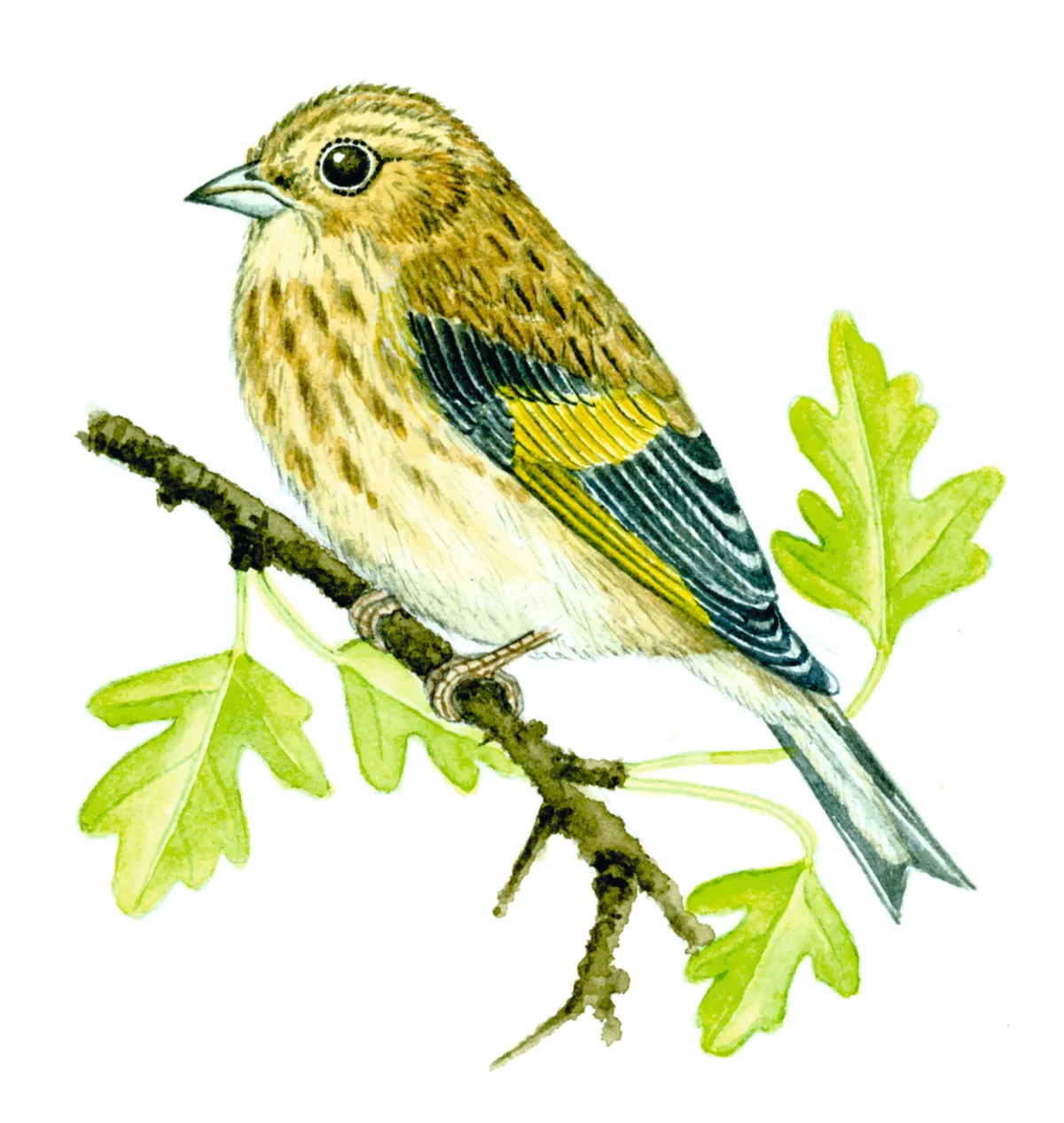
Lacks adult’s red face patch and black cap, with streakier underparts. Tweezer-like bill.
Greenfinch (Carduelis chloris)
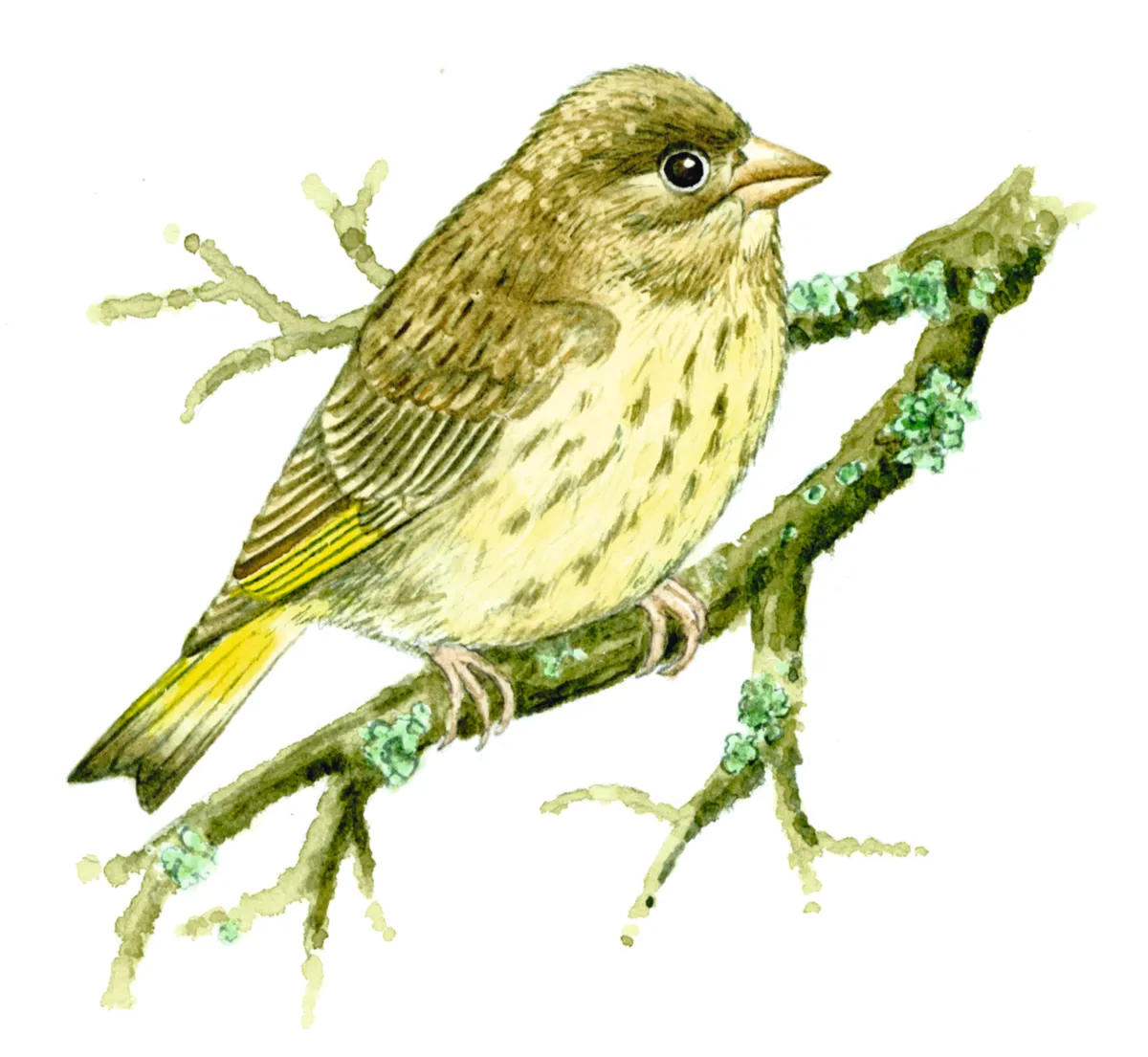
Often grey-brown with just a hint of green. Much streakier than adult. Chunky, triangular bill.
Bullfinch (Pyrrhula pyrrhula)
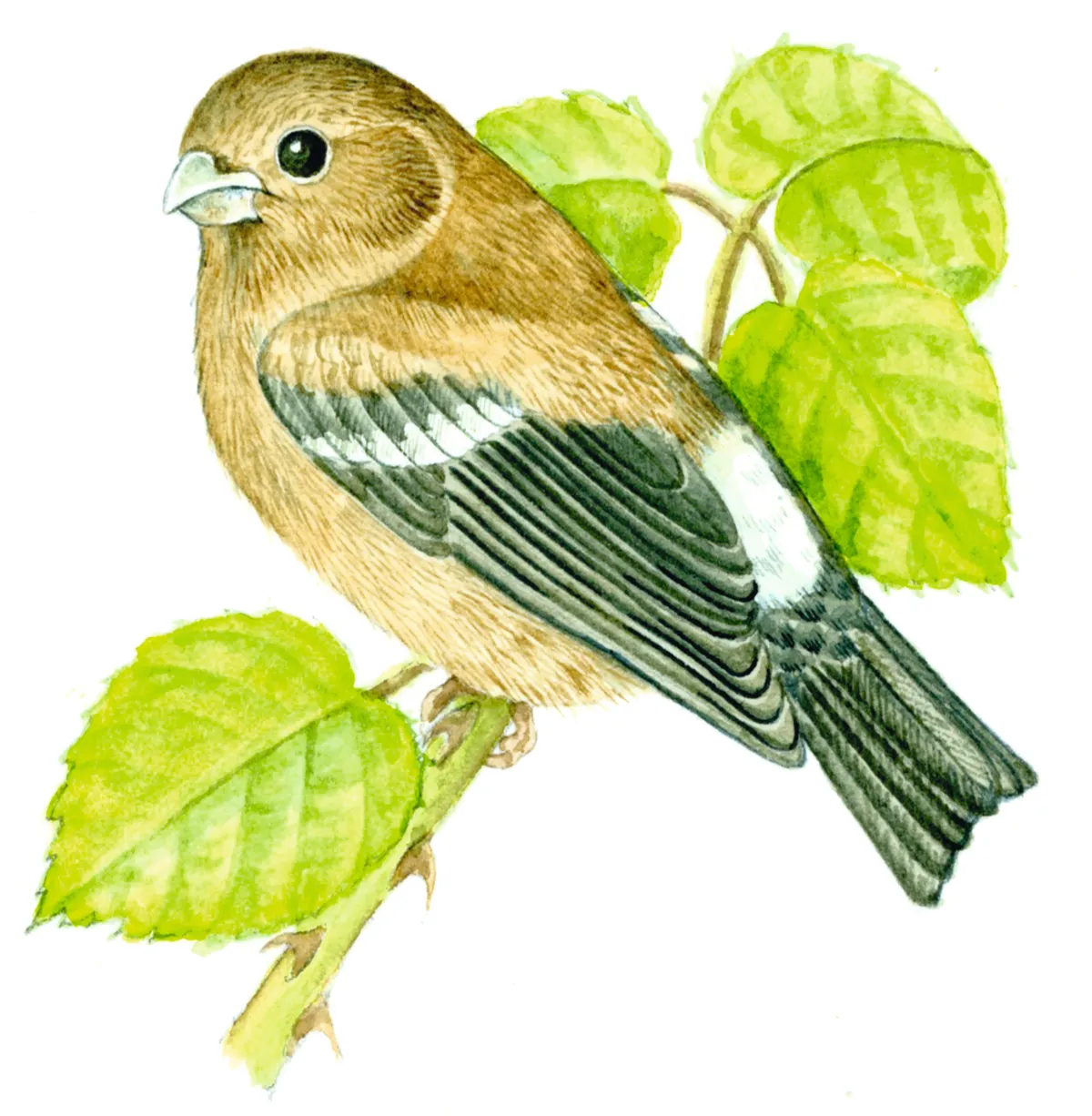
Resembles a very plain adult female, but with no black cap or chin. Stubby bill.
Starling (Sturnus vulgaris)
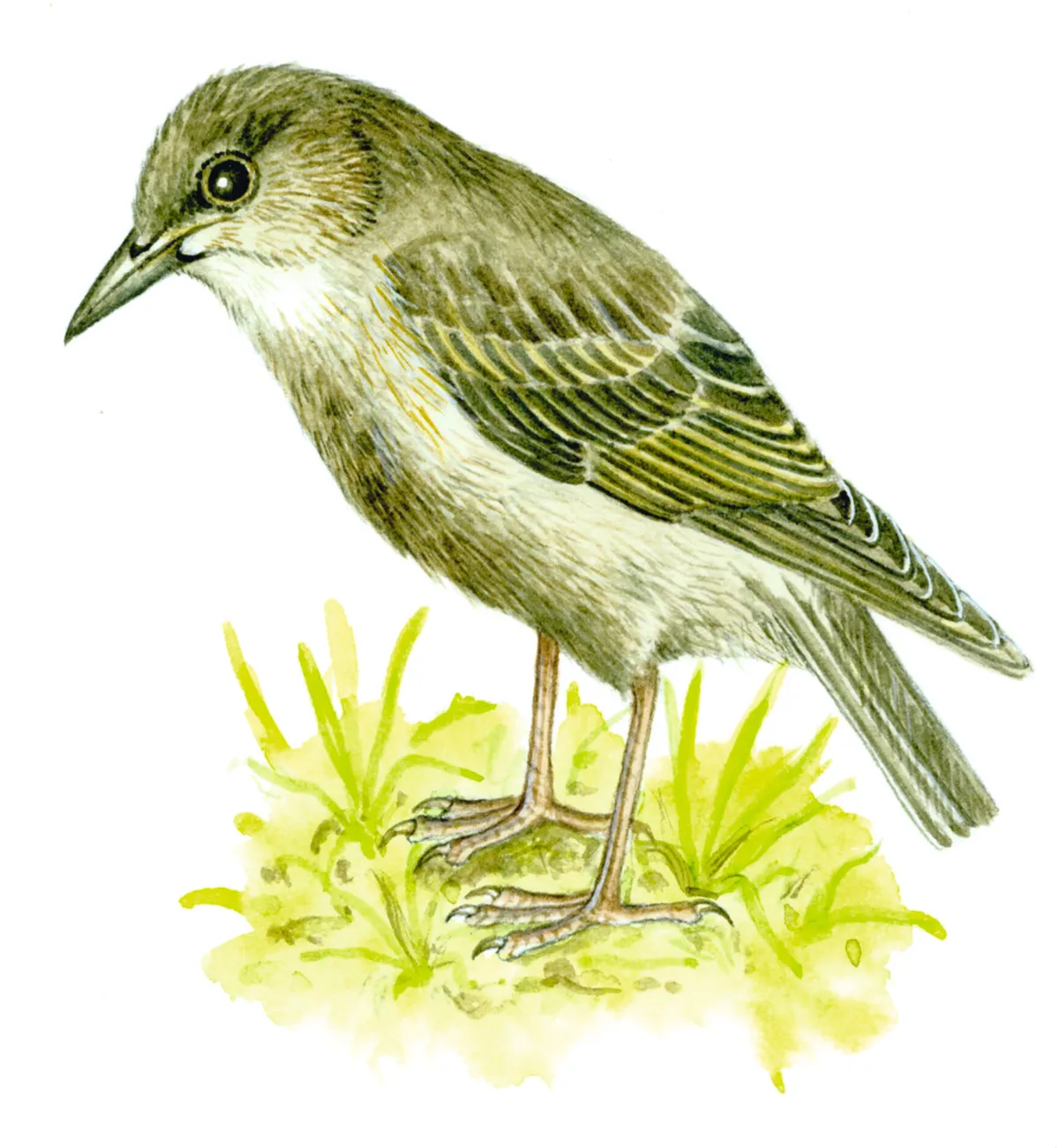
Greyish, sandy-brown plumage, with paler throat. All-black bill (yellow in summer adult).
Woodpigeon (Columba pallumbus)
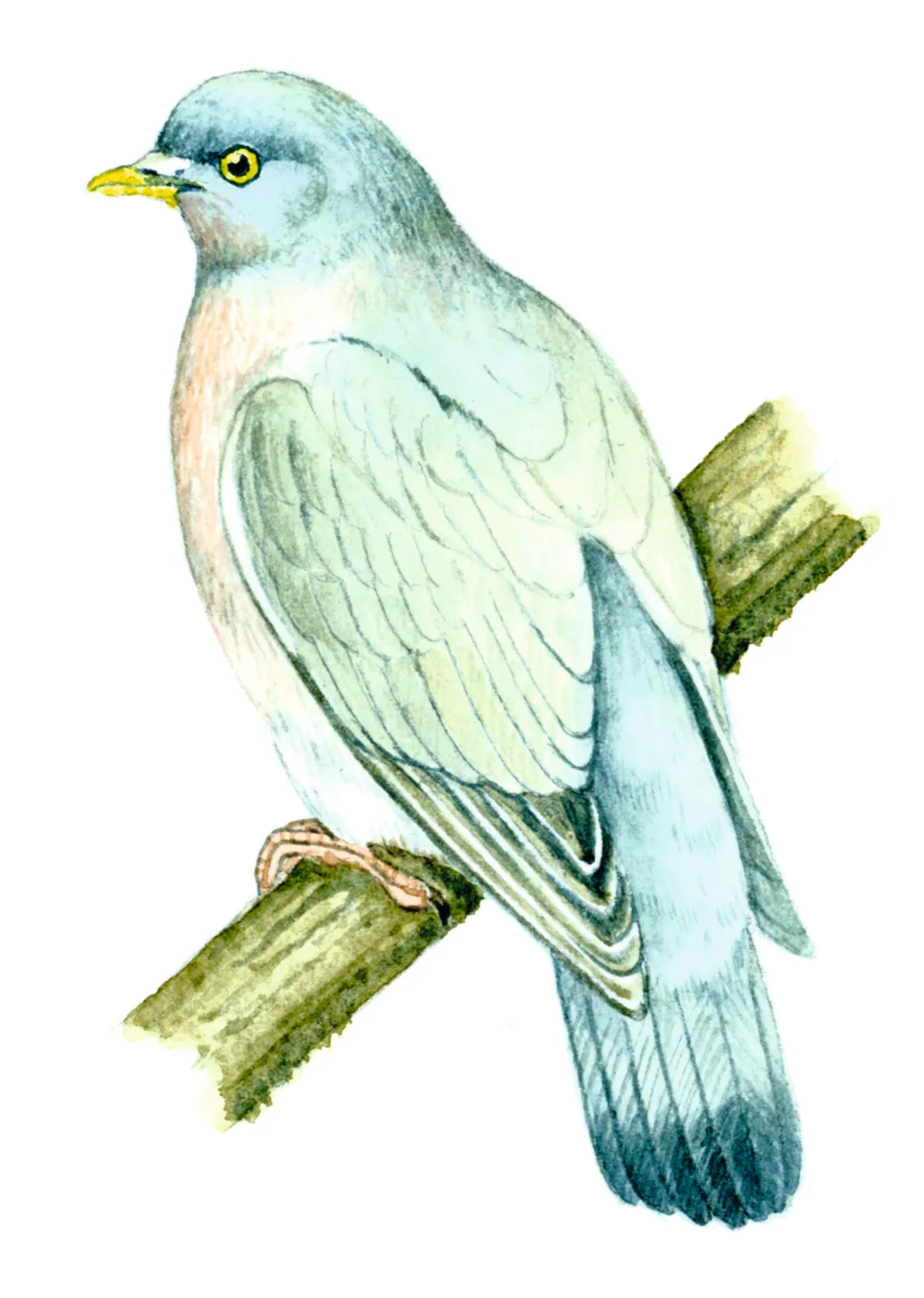
Duller, dirtier grey than adult, without pink tone, and lacks bold white slash on neck.
Pied wagtail (Motacilla alba)
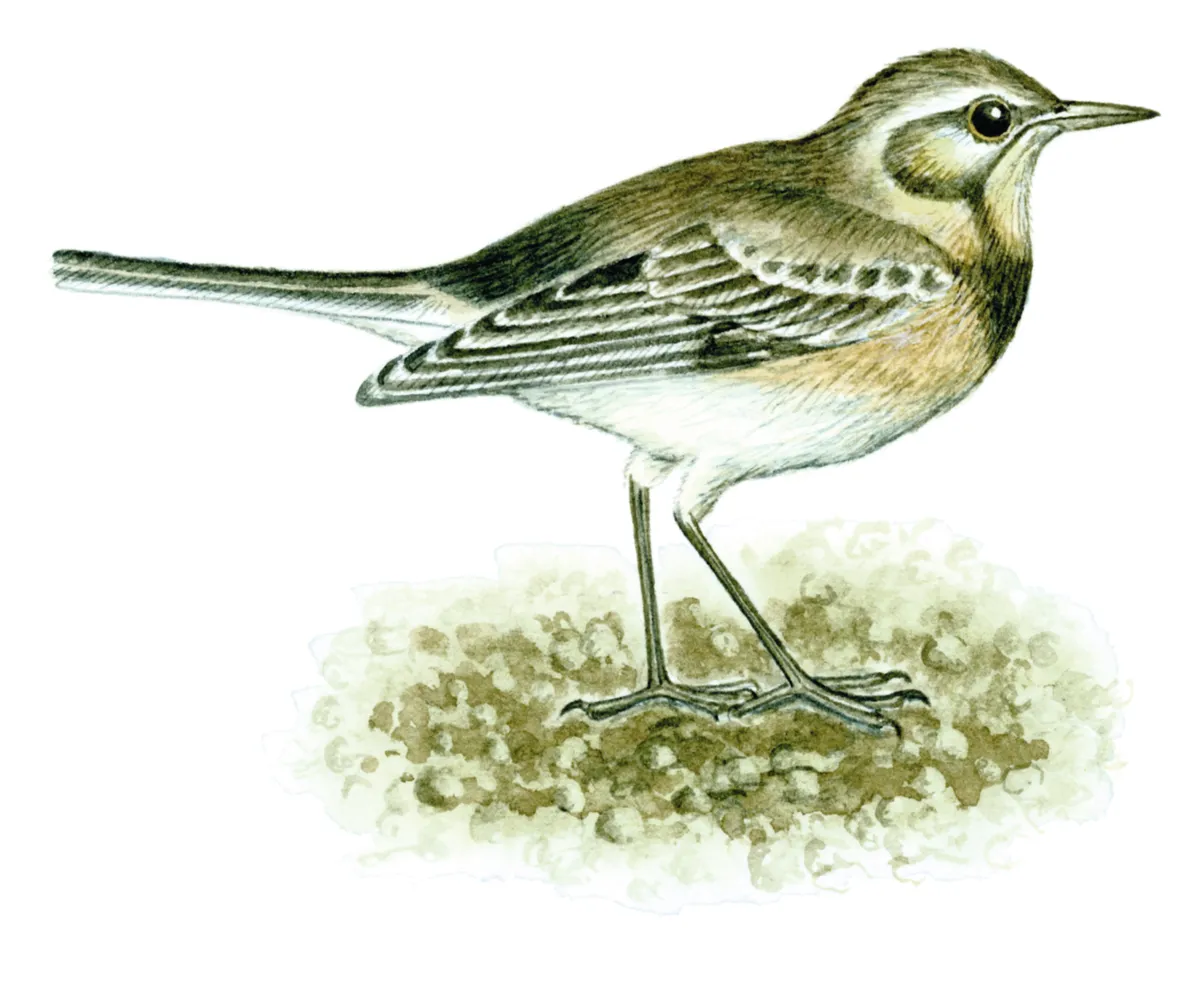
Much paler grey than adult, often with overall yellowish wash, and lacks black cap.
Spotted flycatcher (Muscicapa striata)
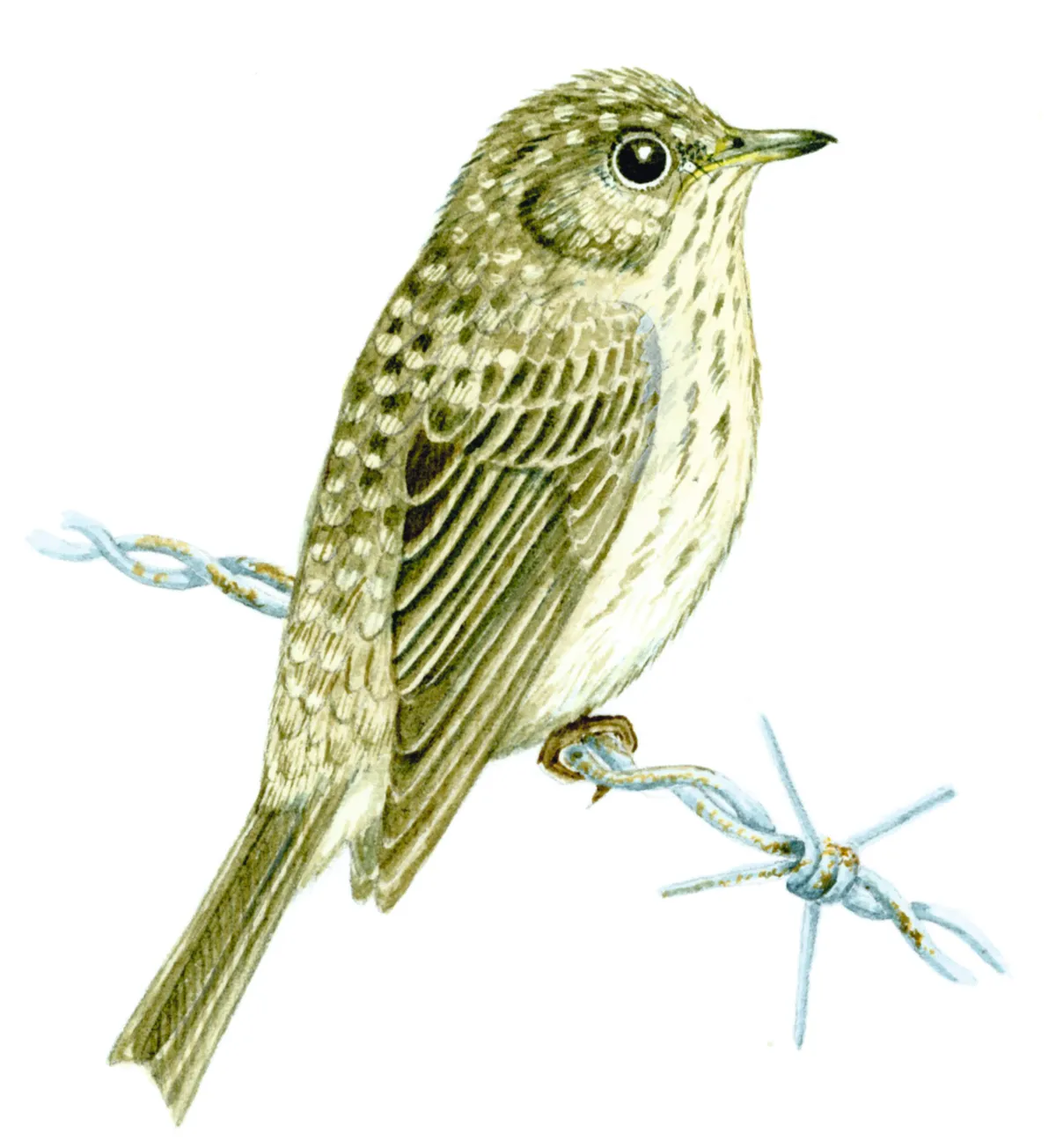
Appears more spotty than adult due to large pale blobs on upper back and shoulders.
All illustrations by Felicity Rose Cole. Main image:
